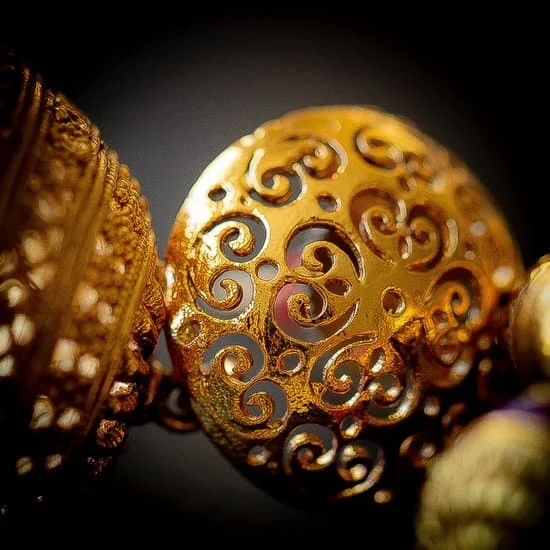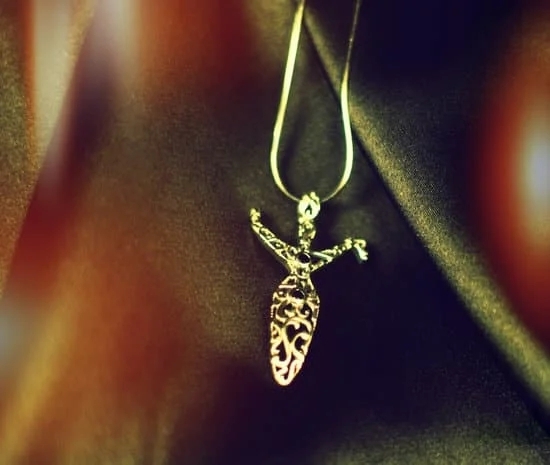Handmade jewelry is a beautiful and unique art form that requires proper care and maintenance to preserve its quality and appearance. One essential aspect of caring for handmade jewelry is polishing, which can significantly enhance the overall look and longevity of the pieces. In this article, we will explore the step-by-step process of how to polish handmade jewelry, covering everything from understanding the materials and tools needed to achieving a high-quality finish and maintaining polished jewelry.
Polishing handmade jewelry may seem like a daunting task, but with the right guidance and techniques, it can be a rewarding and fulfilling process. Whether you are a beginner or an experienced jewelry maker, understanding the importance of proper polishing techniques is crucial in creating stunning pieces that stand the test of time.
By following our comprehensive guide, you will learn how to effectively clean, prepare, and polish your handmade jewelry using various techniques and tools. Additionally, we will provide tips for achieving a professional-looking finish and advice on maintaining the polished appearance of your jewelry. So let’s dive into the world of handmade jewelry polishing and discover the transformative effects it can have on your precious creations.
Understanding the Materials and Tools Needed
Polishing handmade jewelry is a crucial step in the jewelry-making process that can greatly enhance the overall appearance and quality of the piece. To effectively polish handmade jewelry, it is essential to have the right materials and tools at your disposal. Understanding what these are and how they are used is an important aspect of achieving a professional finish on your jewelry.
The materials needed for polishing handmade jewelry typically include polishing compounds, buffing wheels or cloths, sandpaper, and a tumbler if mass finishing is desired. Additionally, specific tools such as a flex shaft machine or rotary tool may be used for intricate polishing work. It’s important to note that alternative options can be used for certain materials and tools if the original ones are not readily available. For example, microfiber cloths can be used instead of traditional buffing wheels.
Having a clear understanding of these materials and tools will make the polishing process more effective and efficient. Proper utilization of these resources can result in beautifully polished handmade jewelry that captures attention and stands out for its high-quality finish.
| Materials | Tools |
|---|---|
| Polishing compounds | Buffing wheels or cloths |
| Sandpaper | Tumbler (optional) |
| Microfiber cloths (alternative option) | Flex shaft machine or rotary tool |
Preparing the Workspace
When it comes to polishing handmade jewelry, creating a suitable workspace is essential for ensuring a smooth and effective process. First and foremost, it’s important to choose a well-lit and well-ventilated area for your workspace. Natural light can be beneficial for accurately assessing the jewelry’s appearance during the polishing process. Proper ventilation is also crucial, especially when working with polishing compounds and chemicals.
In addition to lighting and ventilation, it’s important to organize your workspace in a way that allows for easy access to all necessary materials and tools. This may involve setting up a designated table or workbench specifically for jewelry polishing. Having everything you need within reach can streamline the process and minimize interruptions as you work.
Finally, safety precautions should not be overlooked when preparing your workspace for jewelry polishing. This includes wearing appropriate protective gear such as gloves and eye protection, especially when using power tools or handling chemicals. Ensuring that your workspace is free of clutter and potential hazards can help prevent accidents during the polishing process.
| Workspace Preparation Tips | Safety Precautions |
|---|---|
| Choose a well-lit and well-ventilated area | Wear appropriate protective gear such as gloves and eye protection |
| Organize the workspace for easy access to materials and tools | Ensure workspace is free of clutter and potential hazards |
Cleaning and Preparing the Jewelry
When it comes to polishing handmade jewelry, the first step is always to ensure that the jewelry is thoroughly cleaned and prepared. This crucial step sets the foundation for a successful polishing process and ensures that the final result is of high quality. Here are the essential steps on how to clean and prepare your handmade jewelry before proceeding with the polishing process:
- Inspect the Jewelry: Before cleaning, carefully inspect the jewelry for any dirt, dust, or residue that may have accumulated. Use a magnifying glass if necessary to identify any stubborn stains or tarnishing.
- Gentle Cleaning Solution: Prepare a gentle cleaning solution by mixing mild dish soap with warm water. Avoid harsh chemical cleaners as they can damage certain types of jewelry materials such as pearls or gemstones.
- Soak and Clean: Gently soak the jewelry in the cleaning solution for a few minutes to loosen any grime or debris. Use a soft-bristled brush to gently scrub hard-to-reach areas and intricate details on the jewelry.
- Rinse Thoroughly: After cleaning, rinse the jewelry under running water to remove any soapy residue. Be sure to use a fine mesh strainer or plug in the sink to prevent accidental loss of small jewelry pieces down the drain.
- Pat Dry: Use a soft, lint-free cloth to pat dry the jewelry thoroughly before moving on to the next steps of polishing.
By following these steps for cleaning and preparing your handmade jewelry, you can ensure that it is free from dirt and grime that could interfere with achieving a pristine polished finish.
It’s important to note that different types of jewelry may require specific cleaning methods, so always consider the materials used in your handmade piece before beginning this process. Taking care during this stage will ultimately lead to a more successful polishing outcome and overall longevity of your cherished handmade creations.
Polishing Techniques
Hand Polishing
When it comes to polishing handmade jewelry, one of the most common techniques is hand polishing. This method involves using a soft cloth and a polishing compound to manually rub the surface of the jewelry, bringing out its natural shine. To begin, apply a small amount of the compound onto the cloth and gently rub it onto the jewelry in circular motions. Continue this process until the desired level of shine is achieved.
Using a Polishing Machine
For those looking for a more efficient and time-saving method, using a polishing machine can be highly effective. These machines are equipped with spinning pads or wheels that are designed to buff and smooth the surface of the jewelry. When using a polishing machine, it’s important to start with the lowest speed setting and gradually increase as needed. Additionally, make sure to use different pads or wheels for each type of metal to avoid cross-contamination.
Using Polishing Compounds
Another essential technique for polishing handmade jewelry is utilizing various polishing compounds. These compounds come in different forms such as bars, pastes, or liquids, each designed for specific metals and finishes. To use these compounds effectively, apply a small amount onto a soft cloth or felt bob and gently work it into the jewelry’s surface. The abrasive properties of these compounds help remove scratches and imperfections while enhancing the overall shine.
By mastering these polishing techniques, you can elevate the overall appearance and quality of your handmade jewelry, making it stand out with its stunning finish.
Tips for Achieving a High-Quality Finish
Polishing handmade jewelry is a crucial step in the jewelry-making process, as it significantly enhances the overall appearance and quality of the piece. Whether you are a novice or an experienced jewelry maker, knowing how to polish handmade jewelry step by step is essential for achieving a professional-looking finish. In this section, we will explore some tips for achieving a high-quality finish when polishing handmade jewelry.
To achieve a high-quality finish when polishing handmade jewelry, it is essential to follow certain techniques and methods carefully. Here are some tips to consider:
- Choose the Right Polishing Technique: Depending on the type of jewelry and the desired finish, you can opt for hand polishing, using a polishing machine, or using polishing compounds. Each technique has its own set of advantages and is suitable for different types of jewelry.
- Use the Correct Polishing Tools: Utilize tools such as polishing cloths, buffing wheels, and rotary tools to effectively polish your handmade jewelry. Ensure that the tools are clean and in good condition to avoid any damage to the jewelry.
- Pay Attention to Detail: Take your time to thoroughly polish every part of the jewelry piece, including hard-to-reach areas. This attention to detail will result in a more polished and professional finish.
Additionally, there are common mistakes that should be avoided during the polishing process in order to achieve a high-quality finish on handmade jewelry:
- Avoid Over-Polishing: Over-polishing can lead to unnecessary wear and tear on the metal or gemstones, potentially compromising the integrity of the piece.
- Proper Cleaning: Failure to clean excess polish residue can dull the shine of your finished product. Make sure to clean your piece thoroughly after each step of polishing.
- Regular Practice: As with any skill, practice makes perfect. Be patient with yourself as you hone your skills as a jeweler – it will make all of these pointers much easier over time.
By following these tips and techniques for achieving a high-quality finish when polishing handmade jewelry, you can elevate your pieces from amateur creations to professional works of art.
Finishing Touches
After completing the polishing process, it’s time to add those final finishing touches to your handmade jewelry. This step is crucial in achieving a professional and high-quality finish on your pieces. Adding a personal touch, such as adding a shine or texture, can truly elevate the overall look of the jewelry.
One way to add a final shine to the jewelry is by using a polishing cloth specifically designed for jewelry making. Gently rub the cloth over the surface of the jewelry in small circular motions to bring out its natural luster. For those looking to add texture, consider using specialized tools such as hammers or metal stamps to create unique patterns and designs on the jewelry.
In addition to creating shine and texture, adding any additional elements such as gemstones or beads can enhance the overall appearance of the handmade jewelry. These extra elements can be carefully attached using specific jewelry-making techniques, ensuring that they are secure and complement the design of the piece.
Remember that these finishing touches should reflect your personal style and creativity, so don’t be afraid to experiment with different techniques until you achieve the desired look for your handmade jewelry. By paying attention to these details, you can truly make each piece unique and reflective of your artistic vision when learning how to polish handmade jewelry step by step.
Maintaining Polished Handmade Jewelry
Maintaining the polished finish on your handmade jewelry is essential to ensure it retains its beauty and quality over time. Proper care and maintenance will help prevent tarnishing, scratches, and other forms of damage, allowing your jewelry to remain in pristine condition for years to come. In this section, we will provide you with valuable tips on how to maintain the polished finish on your handmade jewelry.
Proper Storage
One of the key factors in maintaining polished handmade jewelry is proper storage. When not being worn, it is important to store your jewelry in a cool, dry place away from direct sunlight. Exposure to moisture and sunlight can cause discoloration and oxidation, potentially damaging the polished surface of the jewelry. Additionally, storing each piece separately in a soft pouch or a jewelry box with individual compartments will help prevent scratches and tangling.
Regular Cleaning
Regular cleaning is crucial for maintaining the luster of polished handmade jewelry. Using a soft, lint-free cloth, gently wipe down your jewelry after each wear to remove any oils, sweat, or dirt that may have accumulated. For deeper cleaning, you can use a mild soap and water solution to gently clean the surface of the jewelry, followed by thorough drying with a clean cloth. Avoid using harsh chemicals or abrasive materials as they may damage the polished finish.
Professional Maintenance
At times, it may be necessary to seek professional maintenance for your polished handmade jewelry. This could entail having the pieces professionally re-polished by a skilled jeweler or artisan who specializes in handmade jewelry. They will have the expertise and tools required to restore any minor imperfections and bring back the original shine of your cherished pieces.
By following these maintenance tips and incorporating them into your regular routine, you can ensure that your polished handmade jewelry continues to sparkle and shine for years to come.
Conclusion
In conclusion, knowing how to polish handmade jewelry step by step is essential for achieving a professional and high-quality finish. By understanding the materials and tools needed, preparing the workspace, and following specific techniques, individuals can elevate the appearance and durability of their jewelry pieces. The process of cleaning and preparing the jewelry beforehand is crucial in ensuring that the polishing results are flawless.
Furthermore, this article has provided valuable tips for achieving a high-quality finish, along with common mistakes to avoid during the polishing process. The finishing touches added to the jewelry, such as adding a shine or texture, contribute to personalizing each piece. Additionally, our guide also includes advice on maintaining the polished finish on handmade jewelry in order to keep it looking its best for an extended period of time.
Overall, proper polishing techniques play a significant role in enhancing and preserving handmade jewelry. As readers embark on their own jewelry polishing journey utilizing our step-by-step process, we encourage them to share their results and experiences with others in the community. With dedication and attention to detail, anyone can master the art of polishing handmade jewelry and create stunning pieces that will stand out for years to come.
Frequently Asked Questions
How Do You Polish Homemade Jewelry?
To polish homemade jewelry, you can start by cleaning the piece with a soft cloth to remove any dirt or residue. Then, use a polishing cloth or jewelry polishing compound to buff the surface until it shines. For hard-to-reach areas, a soft-bristled brush can be used.
What Do You Need to Polish Jewelry?
When polishing jewelry, you will need a soft cloth, polishing cloth or jewelry polishing compound, and a soft-bristled brush. The soft cloth is for initial cleaning, while the polishing cloth or compound helps to buff and shine the surface of the jewelry. The brush is useful for intricate details.
What Material Is Used for Polishing Jewelry?
The most commonly used material for polishing jewelry is a special type of fabric called a polishing cloth. This cloth is usually made from cotton and impregnated with micro-abrasive particles that help to remove tarnish and restore shine to metal surfaces without scratching them.
Another material used for polishing jewelry is a specific jewelry polishing compound, which can be applied with a soft cloth to bring out a high shine on metal surfaces. Both these materials are gentle enough to use on delicate homemade jewelry pieces.

Welcome to my jewelry blog! My name is Sarah and I am the owner of this blog.
I love making jewelry and sharing my creations with others.
So whether you’re someone who loves wearing jewelry yourself or simply enjoys learning about it, be sure to check out my blog for insightful posts on everything related to this exciting topic!





